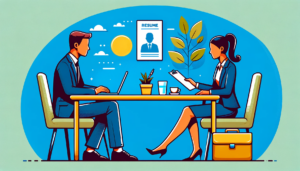A guide to workforce planning post-2020
- 6 Min Read
In this climate of incessant change, leaders must establish a firm grasp on what the organization needs, and how to attain it. Workforce planning and talent strategy will play a major role in this mission, so we took a closer look with the help of renowned industry experts Dina Alvarez and Katrina Collier.
- Author: Sam Alberti
- Date published: Jul 24, 2020
- Categories

The majority of us have never witnessed a corporate or social shift to the same degree that we have in 2020. Such drastic change will soon come to reflect in the day-to-day operations of an organization, and crucially, the workforce planning and eventual makeup of the workforce.
As a result, HR leaders must now step up to the plate and tackle this changing landscape with conviction. Most importantly, they must decipher how to acquire and manage talent in such a way that equips the organization with the skills and the productivity levels that are needed to drive innovation and success.
Easier said than done. Talent acquisition in particular can be tricky terrain, not least during such troubling times. In fact, global talent shortages were already reported to be at record highs prior to the pandemic, with 54% of companies complaining of not being able to find enough skilled applicants to meet demand. The current scenario may complicate this even further.
Equally, retention is a worry for many during this period. A study in May earlier this year even found that 23% of employees feel unsafe in their roles. Needless to say, this renders turnover and attrition a major risk.
The changing expectations of workers
In many ways, this overarching challenge of effectively acquiring and maintaining talent boils down to employer branding. In other words, the company’s reputation as an employer, and its employee value proposition.
For instance, one study found that 69% of candidates would not accept a job in a firm with a bad reputation.
But naturally, as the expectations of the employee changes, employee value proposition must change with it.
Dina Alvarez, Head of culture and employee experience, Everis, offered her take on exactly how these expectations have shifted since the pandemic.
She said: “It is an emotionally difficult moment for the team. Bringing people together in a new way is one of the new demands.
“Things like team meetings, personal check-ins and 1-2-1 meetings could help us to replace what’s been lost. Feedback is expected as well; those, ‘well dones’ and ‘good jobs’ at the coffee machine are missing, so you have to make sure that they still happen.
“On top of that, our employees want to be inspired. They need great leaders. Therefore, leadership skills need to be enhanced in order to to provide the new tools to support and fulfill the workforce.”
Speaker, author and HRD Thought Leader Katrina Collier also weighed in, concurring that leadership is at the center of new employee expectations.
“Employees and potential employees have been looking to leaders for transparency, honesty, reassurance and even vulnerability,” she said.
“Those who have been inflexible and untrustworthy will struggle in the time ahead.”
How employer brand should shift accordingly (and why this matters)
But what change could this bring about exactly? Collier went on to give her view on this, explaining what’s most effective and why.
She said: “People talk, and the internet is a great way to express frustration. I have already seen employee reviews during COVID that will prove detrimental to future recruitment for some companies in the years ahead.
“But I have also seen employees share how they have been taken care of. So to me, the best employer brand comes through employee-generated content; real posts from real people.”
The impact of this on the organization’s bottom line is not to be underestimated. It is well-documented that strong employer brand leads to greater success in the talent acquisition space. One study, for instance, found that it can lead to a decrease of 43% in cost-per-hire.
Similarly, employers can expect to increase the chances of retaining their top talent if employees feel valued, respected, and that the company culture is thriving. In fact, it has been reported that employer branding can bring about 28% reduction in turnover.
“Employment will return to normal levels in due course, so companies need to be incredibly aware of how they are treating their employees, applicants, candidates, leavers and alumnus at this time,” said Collier.
What’s needed and how it will make a difference to workforce planning
Finally, but perhaps most importantly, employers must be wary of exactly what is needed in this new climate. With organizations acquainting themselves with new forms of technology and further cementing their existing relationships with others, a process of upskilling and reskilling may need to be baked into the workforce planning.
Equally, with the need for psychological safety and compassionate leadership becoming more apparent to organizations, power (soft) skills and leadership development will no doubt factor into this equation.
Alvarez offered some further thoughts on what is needed, and how organizations can achieve this.
She said: “We are facing a situation that is demanding from us; skills, behaviors and ways of thought that we have never used before, such as resilience, self-development, leadership and communication. All of us are dealing with aspects that demand a huge effort.
“We also live in a technological era, and companies need to adapt and make changes using technology as a driver.”
In fact, In 2017, the McKinsey Global Institute estimated that 14% of the global workforce (up to 375 million) would have to renew their skills by 2030 due to the onset of automation and other forms of technology.
What’s more, in a recent McKinsey Global Survey, 87% of executives said they were experiencing or soon expecting skill gaps in the workforce.
To this end, leaders must ensure that they are clear on how to execute these changes to workforce planning. Alvarez offered some final thoughts on this, and went on to clarify how this process can contribute towards the curation of a ‘winning workforce’.
She said: “Training is become more key than ever for reskilling and upskilling our people. It is important to deliver new training to cover the different aspects included in resilience, leadership and self-development.
“Helping people to achieve their objectives and meet their expectations will contribute to building an engaged and productive workforce. If we provide an environment in which employees feel well, they tend to innovate more, share information and ideas, and collaborate to achieve shared goals. We are living a unique situation. and this is the perfect moment for us to grow, to learn and to support our people’s integral development.”








